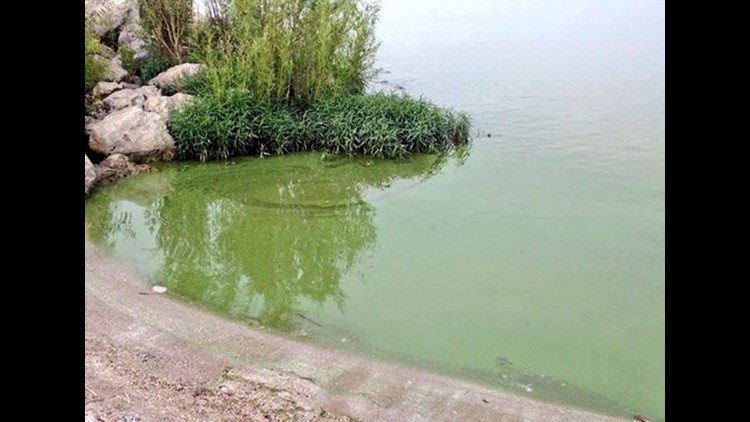(WTOL) - For us the snow, cold and ice are harsh winter conditions. About as far away as you can imagine from hot and stagnant summer days where algae blooms thrive on in Lake Erie. Those microscopic organisms that threaten our drinking water aren't dead beneath that ice, it barely phases them as explained by Dr. Mike McKay a professor of Biology at Bowling Green State University.
"A lot of that algae essentially overwinters. A lot of it forms a resting stage and sits on the bottom with the sediment. So the Microcystis that we all so familiar with that is often recruited from the sediment of the lake bottom during the summer."
Dr. McKay studies it during the warm months and in the dead of winter. Going so far one winter as to use a helicopter to collect samples on the thick ice. Typically, though, it's the Coast Guard that breaks through the ice and helps with cold season research.
"We've developed a really strong partnership with the US Coast Guard, started in 2009 with one of the ice breaks out of Cleveland. Satellites we cannot pick up surface waters under ice so this is really our window to the lake during the winter." Dr. McKay added.
Despite the icy lake we know the Microcystis will be there waiting next summer. The ice merely forces it into hibernation. Heavy spring rains are the main weather culprit that can make a bloom thrive in the summer. To slow these nutrient rich waters from rushing into the lake farmers know their field management must continue to evolve, even in the winter.
Next time you're out for a drive, look closely. There's no corn, soybeans or wheat growing. But all fields, like Paul Herringshaw's, aren't completely quiet.
"You're seeing more and more cover crops happening. And these people are looking into experimenting technology between the variable rate technology and strip tillage maybe to band the soil. So there's more things happening." Says Paul Herringshaw.
Reducing nutrient runoff from fields has becoming an engulfing topic during off-season farm conferences. Part of the solution likely will require patience and time with legacy loads still in the soil.
We just pulled out our grid soil sample last summer on this field right here and I can point to that and tell you that's where my dad use to have his dairy pasture. This is the lot where we use to keep the cattle around the barn. It's because of the phosphorous that's still in the ground." Paul added.
For this season and beyond there are a lot of unknowns. Just how big will the bloom be? How toxic will it become? So work like Paul's must continue and expand to more fields in Northwest Ohio. Because despite the cold so far this winter and ice on the lake another bloom will happen this summer.



